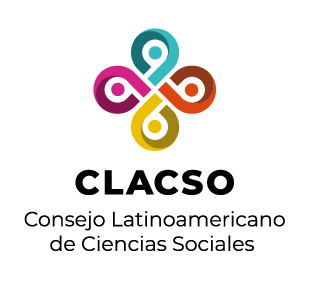Red de Bibliotecas Virtuales de Ciencias Sociales en
América Latina y el Caribe

Por favor, use este identificador para citar o enlazar este ítem:
https://biblioteca-repositorio.clacso.edu.ar/handle/CLACSO/145254Registro completo de metadatos
| Campo DC | Valor | Lengua/Idioma |
|---|---|---|
| dc.creator | Rodrigo Arellano A. | - |
| dc.date | 2018 | - |
| dc.date.accessioned | 2022-03-29T14:20:45Z | - |
| dc.date.available | 2022-03-29T14:20:45Z | - |
| dc.identifier | http://www.redalyc.org/articulo.oa?id=44758090015 | - |
| dc.identifier.uri | http://biblioteca-repositorio.clacso.edu.ar/handle/CLACSO/145254 | - |
| dc.description | The Ministry of Education (MINEDUC) bases the instruction of English in Chile in the Common European Framework of Reference for Languages: Learning, Teaching, Assessment (CEFRL), however its guidelines have not been systematically considered in the practice of creating instructional material in the EFL context of this country. To analyze this issue, this article presents the comparison of the vocabulary about Teaching English to Speakers of Other Languages (TESOL) used in the CEFRL and the English textbooks used in Chile regarding the categories of curriculum design, language teaching methodology and language assessment. The methodology was mixed, not experimental, cross-sectional and descriptive, including the analysis of the CEFRL document and the 8 English textbooks used in Chile in the public sector. Firstly, the data was compared quantitatively using the software Nvivo9 and later some key words (learners / students - teachers) were analyzed quantitatively in terms of frequency and qualitatively using collocations. Results suggest that similar vocabulary is used in both, the CEFRL and Chilean textbooks in terms of language teaching methodology (36% and 33% respectively), but it varies highly in the category of curriculum design (22% and 48% respectively) and mostly in language assessment (42% and 19% respectively) while showing different frequencies in the key words and their associated verbs between students (1,33%) and teacher (0,18%). These results show a constructivist approach in both, but with a minor behaviorist aspect especially in textbooks, indicating relevant differences in the emphasis and coherence between different areas of the instruction. | - |
| dc.format | application/pdf | - |
| dc.language | en | - |
| dc.publisher | Universidad de Costa Rica | - |
| dc.relation | http://www.redalyc.org/revista.oa?id=447 | - |
| dc.rights | Revista Electrónica "Actualidades Investigativas en Educación" | - |
| dc.source | Revista Electrónica "Actualidades Investigativas en Educación" (Costa Rica) Num.1 Vol.18 | - |
| dc.subject | Educación | - |
| dc.subject | teaching guides | - |
| dc.subject | CEFRL | - |
| dc.subject | teachers | - |
| dc.subject | students | - |
| dc.title | A corpus linguistics application in the analysis of textbooks as national teaching instruments of English as a Second Language in Chile | - |
| dc.type | artículo científico | - |
| Aparece en las colecciones: | Instituto de Investigación en Educación - INIE/UCR - Cosecha | |
Ficheros en este ítem:
No hay ficheros asociados a este ítem.
Los ítems de DSpace están protegidos por copyright, con todos los derechos reservados, a menos que se indique lo contrario.